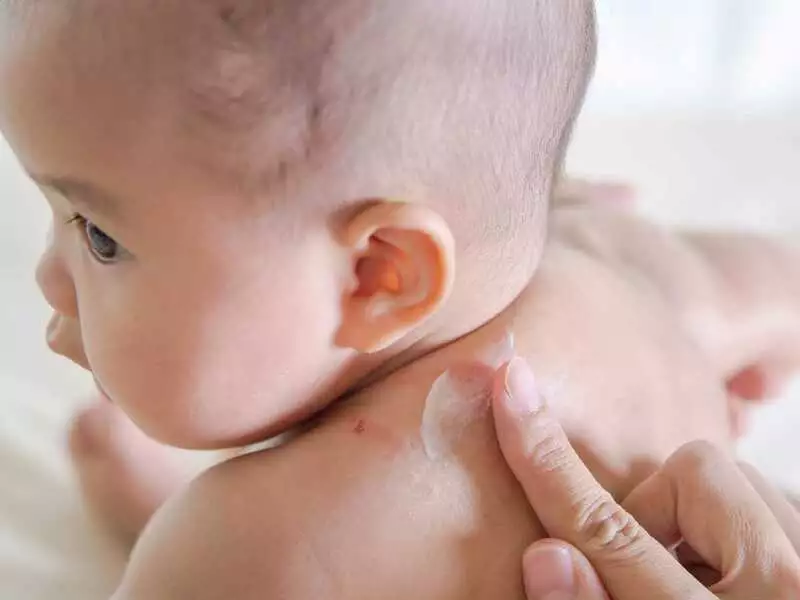The skin forms a barrier between the surrounding environment and the body's organs and systems. During the first years of life, it develops gradually and only at around 3 years of age does it become similar to adult skin. Due to its immaturity, the risk of irritation, infections and certain diseases is greatly increased. This article presents the principles of daily skin care for infants and young children and the most common skin problems occurring at this age.
A few years old
Bathing a toddler can be done either in the bath or in the shower. Remember never to leave a toddler alone in the water for safety reasons. For bathing and washing your older child's head you should still only use products intended for children. It is advisable to use liquid cleansers that do not contain dyes, preservatives or fragrances. This is particularly important in children with skin problems and dermatological diseases. Adult products contain substances that can cause irritation, allergic reactions, itching and dryness of the skin. Alkaline soaps are not recommended for children. They disrupt the epidermal barrier function, leading to thinning of the epidermal barrier, which promotes skin infections. Washing the head, for most children, is the least pleasant part of the bath. Special "roundabouts" that are placed on the baby's head and prevent water from getting into the eyes can help. After bathing, the baby's body should be thoroughly dried and the skin should be moisturised with baby lotion or cream. You can also use an emollient, which should be applied to slightly damp skin.
Skin care in winter and summer
In both winter and summer, your child's face should be treated with a sunscreen cream. Winter creams must be greasier and, in addition to UVA and UVB filters, contain substances to protect against wind and frost.
In summer, between 11 a.m. and 4 p.m., children's skin should not be exposed to direct sunlight. It is important to arrange for children to play in the shade. Headgear should not be forgotten. Hats with a brim seem to be the best solution. Before going out for a walk, as with babies, the use of sunscreen is recommended. For babies under three years of age, creams with a factor 50+ are recommended, while older children can be treated with a factor 30 cream. When bathing in water, use water-resistant creams and repeat the application of the cosmetic frequently. It is advisable to wear special clothing for babies: shirts and shorts (also available with long sleeves and legs) made of polyester fibres coated with titanium dioxide nanoparticles. Such garments are characterised by significant photoprotective properties. Sunglasses should be used to protect the eyes from the sun's rays, but only those with special filters. Sunglasses without filters will damage your eyesight. Therefore, do not buy them in toy shops, but in opticians' shops! Children with fair skin, red hair, light hair, blue eyes and children with a lot of pigment marks and freckles are particularly at risk of sunburn.

photo: shutterstock
Skin problems
Atopic dermatitis (AD)
Is a chronic inflammatory skin disease characterised by a relapsing course. Characteristic of AD is dry skin accompanied by intense itching. The skin lesions are papules located on an inflammatory base. As the disease progresses, skin exfoliation, lichenisation and scratching occur. In the first months of life, the skin inflammation is localised on the cheeks and scalp, in older infants lesions can be seen on the whole trunk and outer surfaces of the limbs, in older children on the elbow pits, knee pits, ankle joints, around the eyes, mouth, neck, upper chest, backs of the hands and feet and wrists. Because of the pruritus, the child is restless, scratches and may have difficulty sleeping. Complications of the disease include bacterial and sometimes fungal skin infections. The main preparations used to treat the condition are emollients. Regular, frequent use of emollients 3-4 times a day restores the skin's barrier function, reduces itching and relieves inflammation. With the correct use of these preparations, we can prevent the need to take oral medication.









